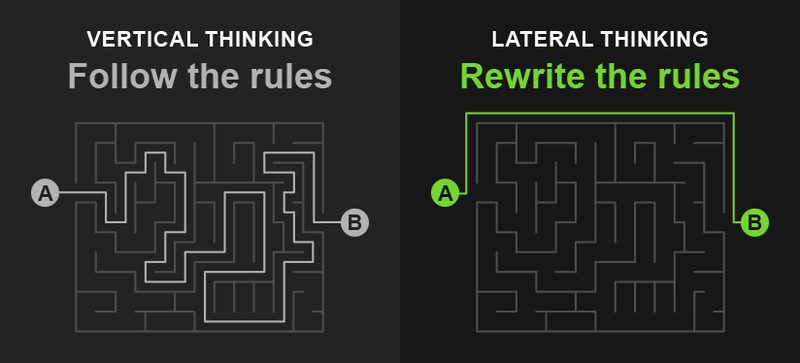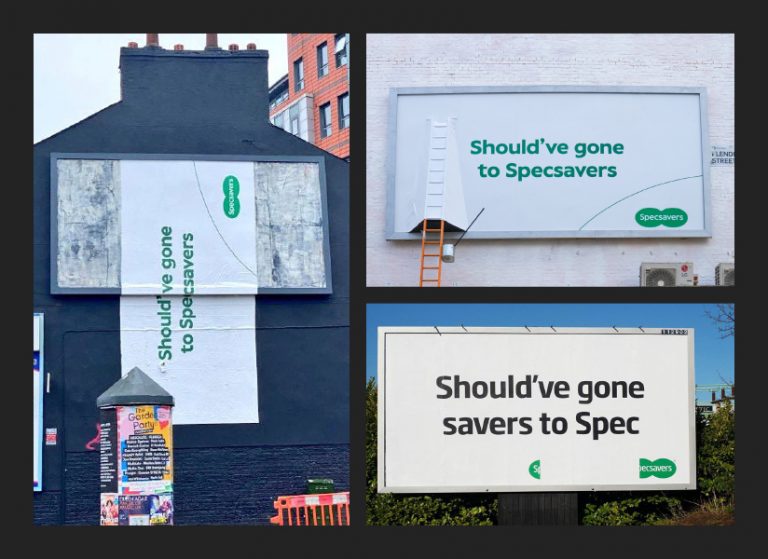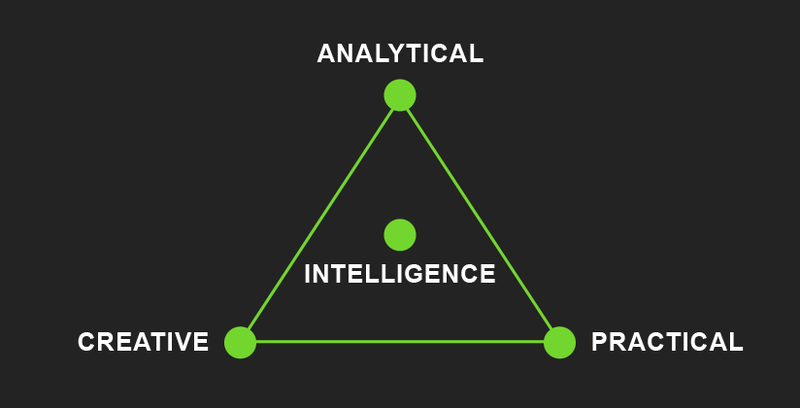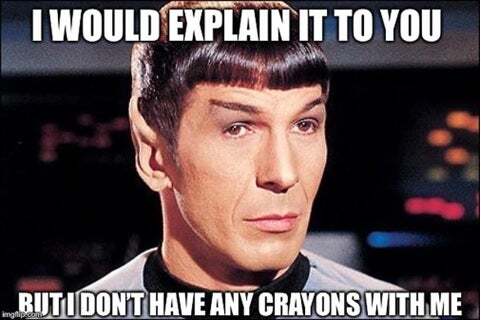The Importance of Creativity
What does it mean to “be creative” and why is it important in marketing? This article explores different ways to consider creativity and the challenges that come with the skill.
Our clients demand bold, disruptive ideas – and rightly so. But there is no one-size-fits-all approach to marketing. Creativity is essential if we’re to help our clients push through a noisy commercial world and resonate with a customer base that’s increasingly overwhelmed by choice and content.
As a marketing agency, we want to push boundaries and drive innovation. To do this, we must understand and respect “creativity”.
The hidden talent of creativity
There’s a misconception among many people, some marketers included, that creativity and artistic ability are synonymous. However, art and design is just one of many methods used to communicate and express ideas in a way that can be understood by others. Writing is another obvious example – obvious, that is, because we refer to those involved in asset production as the ‘creative team’.
A less obvious example is technical SEO. At the surface level, an SEO deals in data, site maps and coding. These are STEM activities that are typically positioned in opposition to the arts. But with thousands of other companies also vying for those coveted top rankings – and the path to achieving them hidden within Google’s secret recipe (the algorithm) – creativity in SEO is crucial to success.
But does it really matter?
People without art and design training who make the false assumption that they are not and never will be creative are missing out on valuable opportunities to grow. It can also lead us to overlook the creative talents of those around us. For example, we may not think of a Data Analyst as being creative and yet the ability to problem solve is surely requisite for this role.
Let’s imagine that we have data from a survey of 2,000 people across the country. A prescribed and formulaic analysis leads to prescribed and formulaic insights. However, an analyst who has been given the space to develop their creativity can go beyond this – investigating patterns to uncover compelling insights, perhaps by cross-referencing certain answers and demographics in ways not previously considered.
So, if we should reject the fallacy that creativity is the same as artistic ability, how should we think of creativity?
The reality of creativity
Creativity as a way of thinking
At its most basic, textbook definition, creativity is a way of thinking in which we use our ingenuity to address a need or problem. It is where we use lateral thought processes to come up with a unique idea, answer or approach. And the solution doesn’t even have to be complex – in some cases, it’s so obvious that it is unconsciously overlooked.

The best examples of creativity in campaign-based marketing often involve the simplest of ideas – those concepts that make you think “Now why didn’t I think of that?”
Specsavers offers a great example of this.No doubt a copywriter perfected the famous tagline “You should have gone to Specsavers,” but the original concept and the campaigns that have followed are examples of lateral thinking that anyone, given the chance to develop their creativity, could have suggested.After all, it’s the very purpose of the products and services they offer: poor eyesight leads to mistakes. What better way to communicate this message than to show it in action? It’s simple and creative. It’s substance over style.

It’s also worth noting that the artwork, with the tagline in green on a white background, is very basic. Another example of why creativity is not synonymous with art.
Creativity as a type of intelligence
In 1985, psychologist Robert Sternburg put forward his “triarchic” theory of intelligence. He suggested that there was too much focus on academic intelligence (e.g. that which is measured by IQ tests) and that general intelligence comprises analytical, practical and creative intelligence.

Sternburg places the same importance on creativity as he does on analysis and practicality – something that society at large still struggles with almost 40 years later. (Perhaps this is due to the oversimplified parallels to the arts; funding for which often gets the chop first when money is tight.) Being logical is paraded as a key trait of intelligence (Spock, anyone?) as if lateral thinking is humanity’s most disposable talent.

In marketing, and many other professions, success is born from the mix of Sternburg’s three types of intelligence:
- Analytical: gathering data from various sources (market research, keyword research, backlink profiles, sales data, etc.) and drawing useful insights to help inform a strategy.
- Practical: operations and planning, delivery and production, client communications, process.
- Creativity: being disruptive, ideation, driving innovation, asset production.
Importantly, this triarchic theory supports the idea that intelligence is not fixed. Creativity is a skill that can be acquired, practised and developed.
See our creativity in action! Check out our case studies.
The challenge of consistent creativity
As a marketing agency, we use our creativity to form unique concepts and ideas that will help us to achieve our clients’ objectives, whether that is launching a brand, growing social media audiences, demonstrating thought leadership, increasing backlinks or improving conversions.
The challenge we face is that the need to ideate is constant. We live in an Attention Economy. We need to maximise the right attention – Fame, Admiration and Belief – from the right audiences. It’s hard work. But striving for the best for our clients is imperative to our success. And we thrive on it.
The Einstellung effect
In an eye-tracking study of chess players, researchers observed that the participants kept returning to the first solution they found for a particular chess problem, even though they were supposedly considering multiple options. This was most evident in the experienced players.
This is a natural human tendency known as the Einstellung effect: “when the first idea that comes to mind, triggered by familiar features of a problem, prevents a better solution from being found.”
What this really means is that, without meaning to, we instinctually return to the most familiar option. Once we have one solution, we find it hard to think of anything else – especially if we’re well-versed in our area of expertise.
In chess, the consequence of the Einstellung effect might be losing a game. In a marketing context, the consequence might be the difference between a company reaching or not reaching its business targets.
Practising creativity is one way that we can train ourselves out of this tendency to default to the familiar; to push our creative minds to the limits while maintaining focus.
How to practise creativity
There are plenty of creative exercises you can find online to help marketers (or anyone, for that matter) push for more innovative ideas. One example is ‘connecting concepts’.
In this exercise, you take two seemingly unrelated ideas or concepts to create something new. For example, what do you get if you combine Where’s Wally? (Where’s Waldo?) with the serious issue of gender equity in the workplace? In the case of the UN Women Egypt, you get a clever campaign highlighting the lack of women in the workforce (they represented 23% of the labour force in 2017 when the campaign was published).

DDB Dubai/IC4Design/UN Women Egypt
Much like the Specsavers ads, the message is quite simple: it shouldn’t be this hard to find women in these settings. The creative concept and execution are provocative and visually engaging without being glib.
The ‘connecting concepts’ exercise won’t always result in the perfect solution, but that’s not the point: the point is that as marketers, we can and should look for inspiration beyond the logical to counter that pesky Einstellung effect and achieve the best for our clients. It’s lateral thinking in action.
Key takeaways
- Creativity is the ability to use non-linear thought processes to generate unique ideas that solve problems.
- It is a skill that is as important as analytical and practical skills for successful marketing and can be improved with practice.
- Regular ideation can lead to creative fatigue, making it more likely for us to become distracted by our initial thoughts and solutions.
- As a world-class marketing agency, we seek to counter this effect by accepting inspiration and practising our creative skills.
Work with Gravity Global
Gravity Global is the world’s most awarded B2B marketing agency. We offer a range of tools and services dedicated to ensuring your business succeeds, covering brand, reputation and demand performance.
If you’re interested in working with Gravity Global or want to learn more about our FAB methodology/creative work, get in touch.


